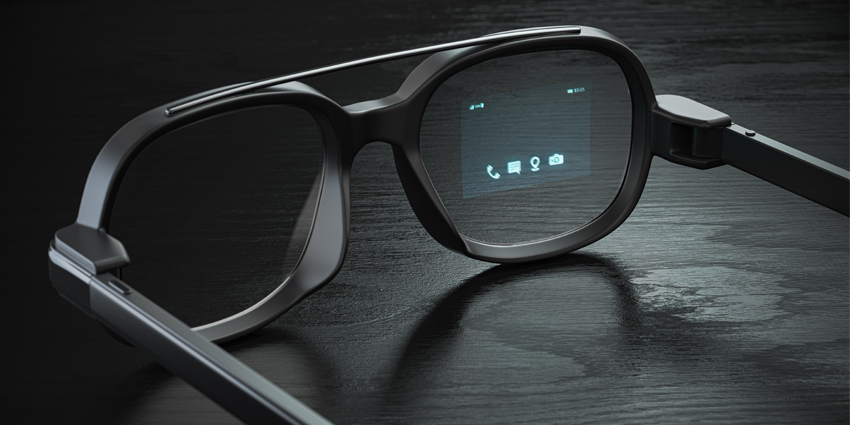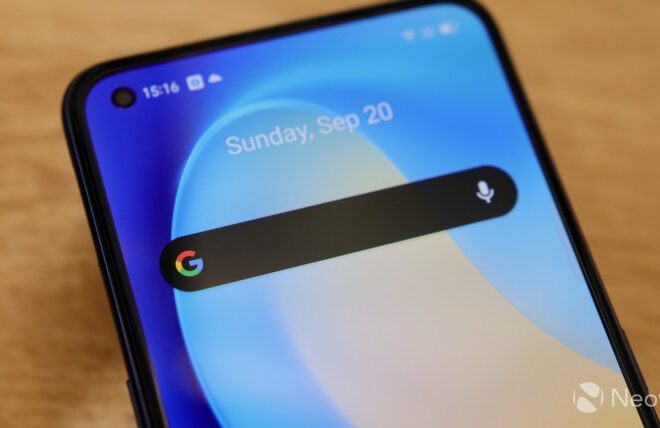
Android’s Answer to Vision Pro: Inside the New Era of AI-Powered Mixed Reality
The world of personal technology is on the cusp of its next great paradigm shift, moving beyond the flat screens of our smartphones and laptops into the immersive realm of spatial computing. While Apple’s Vision Pro has captured the public imagination and set a high benchmark for what’s possible, the latest Android news signals that a formidable challenger is preparing to enter the arena. A powerful alliance between Google, Samsung, and Qualcomm is gearing up to launch a new generation of mixed reality (XR) headsets. These devices aren’t just iterative updates to existing VR hardware; they represent a fundamental rethinking of the user experience, powered by a dedicated Android XR platform and deeply integrated, on-device artificial intelligence. This strategic push aims to do for spatial computing what Android did for smartphones: create an open, accessible, and innovative ecosystem that offers a compelling alternative and drives the entire industry forward. This is more than just a new product launch; it’s the opening salvo in the battle for the future of digital interaction.
The Foundation: A Strategic Alliance to Power Android XR
The effort to build a true competitor to Apple’s visionOS is not the work of a single company but a strategic collaboration between three titans of the tech industry. This alliance leverages the unique strengths of each partner to create a holistic platform, mirroring the successful ecosystem model that made Android phones the most dominant mobile platform in the world. Understanding the roles of each player is key to appreciating the scale and ambition of this endeavor.
A Trifecta of Expertise: Google, Samsung, and Qualcomm
At the heart of this initiative is a synergistic partnership. Google provides the software soul of the operation with “Android XR,” a new operating system built specifically for spatial computing. Drawing lessons from past projects like Daydream VR and its ongoing work with ARCore, Google is crafting a platform designed to be open and familiar to the millions of developers already building for Android. The goal is to lower the barrier to entry, enabling a rapid expansion of apps and experiences that go far beyond what a single company could produce.
Samsung brings its unparalleled hardware and manufacturing prowess to the table. With a long history in virtual reality, from the early Gear VR to the more advanced Odyssey headsets, Samsung possesses critical experience in designing ergonomic and powerful head-mounted displays. More importantly, their dominance in display technology (particularly high-resolution Micro-OLED panels), advanced sensor manufacturing, and system-on-a-chip (SoC) design makes them the ideal partner to engineer the physical device. They are responsible for translating the software vision into a tangible, high-performance product that can stand toe-to-toe with Apple’s meticulous hardware engineering.
Finally, Qualcomm supplies the silicon heart of these new Android gadgets. The company’s Snapdragon XR series of chipsets are purpose-built for the unique demands of mixed reality. Unlike standard mobile processors, these chips are optimized for low-latency sensor processing, high-fidelity graphics rendering across two high-resolution displays, and, crucially, efficient on-device AI computation. The latest Snapdragon XR2+ Gen 2, for example, is designed to handle 4K-per-eye resolutions and manage data from more than ten concurrent cameras and sensors, providing the raw power needed for a seamless and believable mixed reality experience.
Engineering the Vision Pro Competitor: A Technical Breakdown

Creating a device that can rival the technical achievements of the Vision Pro requires a masterful integration of cutting-edge components. The upcoming generation of Android XR headsets is expected to push the boundaries in several key areas, from visual fidelity to intelligent processing. The specifications are not just about numbers on a page; they directly impact the quality of the immersive experience and the types of applications that become possible.
Display Technology and Visual Fidelity
The “magic window” effect of any XR headset lives or dies by its display quality. The goal is to achieve “retinal resolution,” where the pixels are so dense that they become indistinguishable to the human eye. To accomplish this, flagship Android XR devices are expected to utilize Micro-OLED displays, capable of delivering resolutions of around 4K per eye (approximately 3840 x 3840 pixels). This is paired with a target refresh rate of 90Hz or higher to ensure smooth motion and prevent the motion sickness that plagued earlier VR devices. High dynamic range (HDR) and a wide color gamut will be essential for creating lifelike virtual objects that appear convincingly integrated into the real world. A critical technique enabled by internal eye-tracking cameras is foveated rendering, where the processor renders the part of the scene the user is directly looking at in full resolution while reducing the detail in their peripheral vision. This dramatically reduces the computational load without a perceptible loss in quality, allowing for more complex graphics.
On-Device AI and Sensory Processing
Perhaps the most significant differentiator for this new wave of Android gadgets is the emphasis on native, on-device AI. This is a crucial architectural decision. While cloud-based AI is powerful, it introduces latency, which is unacceptable for real-time spatial interactions. The Snapdragon XR chipset is designed with a powerful Neural Processing Unit (NPU) to handle these tasks locally. This has several profound implications:
- Advanced Hand and Eye Tracking: On-device AI can interpret subtle hand gestures and eye movements with millisecond latency, allowing for intuitive, controller-free navigation.
- Environment Mapping (SLAM): The headset will constantly build a 3D map of its surroundings using Simultaneous Localization and Mapping (SLAM) algorithms. This allows virtual objects to be realistically “anchored” to real-world surfaces, like placing a virtual chessboard on your actual coffee table.
- Object and Scene Recognition: The AI can identify objects, text, and even people in the user’s environment, enabling powerful contextual applications. For example, looking at a plant could bring up information about its species, or looking at a foreign-language menu could display an instant translation.
To manage the immense data stream from the sensor suite (high-resolution RGB cameras, depth sensors, IMUs), these headsets will likely employ a dedicated co-processor, similar in function to Apple’s R1 chip. This offloads the main processor, ensuring that head movements are reflected on the display with near-zero latency, which is paramount for user comfort and immersion.
Beyond the Headset: The Power of the Android XR Platform and AI
While the hardware is impressive, the long-term success of the Android XR ecosystem will be determined by its software, developer support, and the compelling use cases it enables. This is where the open nature of Android and the deep integration of AI can create a powerful competitive advantage over more closed systems. The strategy is to foster a vibrant ecosystem where innovation can flourish from all corners of the development community.
An Open Ecosystem for Developers

Apple’s “walled garden” approach ensures a high degree of quality and control but can stifle innovation and limit choice. Android XR aims to be the opposite. By leveraging familiar tools like Android Studio and programming languages like Kotlin and Java, Google is making it incredibly easy for the world’s largest community of mobile developers to start building spatial applications. This open approach is expected to lead to a more diverse and competitive app marketplace, potentially including multiple app stores (e.g., Google Play, Samsung Galaxy Store) and the ability for users to sideload applications. This freedom encourages experimentation and can lead to the discovery of the “killer app” that defines the platform.
Real-World Applications Fueled by Native AI
The true potential of these devices is unlocked when advanced hardware meets intelligent software. The native AI capabilities will enable applications that feel less like traditional software and more like an intelligent assistant for your life. Here are some practical examples:
- Enhanced Productivity: Imagine an architect walking through a construction site. The headset’s AI could recognize the structure and overlay the final 3D blueprint, allowing them to spot discrepancies in real-time. A remote expert could see what the architect sees and draw annotations that appear locked onto the physical world.
- Seamless Integration with Android Phones: A core strength will be the deep link to the existing Android ecosystem. You could receive a notification on your phone, look at a nearby wall, and “pin” the entire app conversation there to interact with it on a massive virtual screen, all while keeping your phone in your pocket.
- Next-Generation Communication: AI-powered real-time translation could become commonplace. During a conversation with someone speaking a different language, their words could appear as subtitles floating in your vision. AI could also help generate realistic avatars for virtual meetings that mimic your facial expressions perfectly.
- Creative and Educational Tools: A user could describe a complex 3D object, and a generative AI tool could sculpt it into existence in front of them. A medical student could perform a virtual dissection on a 3D anatomical model that responds realistically to their actions.
Strategic Positioning: How Android XR Can Win
Entering a market where a competitor has already established a premium benchmark requires a clever and aggressive strategy. The Android XR alliance isn’t just trying to build a better piece of hardware; it’s aiming to win the market by focusing on accessibility, ecosystem integration, and offering a fundamentally different value proposition.

The Price and Accessibility Advantage
Apple’s Vision Pro, with its $3,500 price tag, is a luxury product for early adopters and professionals. This creates a massive opening for the Android ecosystem. By leveraging economies of scale in manufacturing and offering a range of devices from different partners, the Android XR platform can target a much more accessible price point. A flagship Samsung headset might launch in the $1,500-$2,000 range, with other manufacturers potentially releasing even more affordable models later on. This pricing strategy could dramatically accelerate mainstream adoption, making spatial computing a tool for millions rather than a toy for the wealthy.
Tips and Considerations for Prospective Users
As these exciting new Android gadgets come to market, it’s important for consumers to be informed. Here are a few key considerations:
- Evaluate the App Library: The best hardware is only as good as its software. Before buying, investigate the availability of apps that match your primary use case, whether it’s for productivity, gaming, or media consumption.
- Prioritize Comfort and Ergonomics: A headset’s weight, balance, and facial interface are critically important for long-term use. Seek out hands-on reviews that focus on how the device feels after 30 minutes or more of continuous wear.
- Understand the Ecosystem Lock-in: While Android XR promises to be more open, purchases made on one app store may not transfer to another. Understand how the device integrates with your existing digital life, especially your Android phone and other smart devices.
Conclusion: The Dawn of a New Computing Era
The impending arrival of high-end, AI-powered mixed reality headsets from the Android ecosystem marks a pivotal moment in technology. This is far more than a simple response to a competitor; it is a declaration that the future of computing will be a multi-platform, hotly contested space. By combining Samsung’s hardware excellence, Qualcomm’s specialized silicon, and Google’s open and developer-friendly Android XR platform, the alliance is poised to offer a powerful, accessible, and innovative alternative. The integration of on-device AI promises to unlock a new class of applications that are more intuitive, contextual, and seamlessly blended with our physical world. The next chapter of Android news will be written not on glass screens, but in the very space around us, and the competition that is about to unfold will benefit us all.



